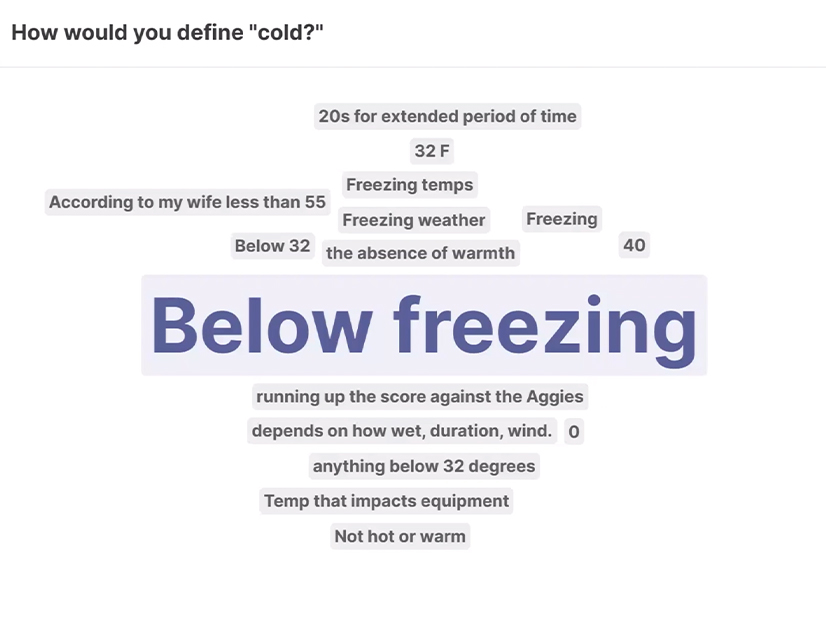NERC’s new cold weather standards give utilities considerable freedom in implementation, which is both an opportunity and a danger, attendees at a workshop hosted by the Texas Reliability Entity heard Thursday.
Speaking at the regional entity’s Spring Standards, Security and Reliability Workshop, Mario de la Garza, Texas RE’s manager of operations and planning compliance monitoring, pointed out that EOP-011-2, which took effect earlier this month after FERC approved it following the February 2021 winter storm, specifies only that registered entities prepare for “cold weather” rather than specific temperatures or conditions. (See FERC Approves Cold Weather Standards.)
This is deliberate, he said, observing that utilities in different areas will likely have very different ideas of what constitutes “cold weather.”
To illustrate this difference, he conducted a survey for participants to provide their definitions of “cold.” The seemingly simple question garnered a wide range of responses: The most popular answer was simply “below freezing,” but one said “not hot or warm,” while another believed only “20s [F] for [an] extended period of time” qualified, and one said “cold” meant a temperature “that impacts equipment.”
 Attendees gave a wide variety of responses when asked for their definition of the word “cold.” | Texas RE
Attendees gave a wide variety of responses when asked for their definition of the word “cold.” | Texas RE
“My definition of cold is 40 degrees; that’s where I need to put my jacket on,” Garza said. “But that’s clearly not the same definition for [someone] who lives on the [Texas] Panhandle.”
If the definition of cold varied so much in just one room, Garza continued, the difference must be even greater between the service areas of different utilities — or even within the territory of a single large utility. This is why the standard drafting team that created the cold weather standards made the definition so broad, he said: to give individual utilities the flexibility to define cold weather, and their response to it, according to the circumstances they face rather than imposing definitions that may not make sense for everyone.
Garza acknowledged that this freedom also creates a responsibility for utilities to be proactive in setting parameters for the applicability of EOP-011-2 and its successor EOP-011-3, which is set to take effect in October next year. (See FERC Denies Rehearing of Cold Weather Standard.) The standards’ requirements include the creation of cold weather plans, and the freedom they provide means utilities must be thorough when setting the “trigger points” at which their plans take effect.
Garza recommended that once utilities have a plan in place, they make sure all relevant personnel are properly trained. He joked that auditors at Texas RE are “big fans [of] checklists” — especially ones that are completed.
“When we get a filled checklist for a specific project, that shows us that certain activities were performed [and] gives us some assurance that things were done … in respect to the matter,” Garza said. “So we highly encourage [you to], along with your plan, have a checklist to make sure that individuals who are a part of your plan are doing tasks in a specific order … that they are responsible for.”



